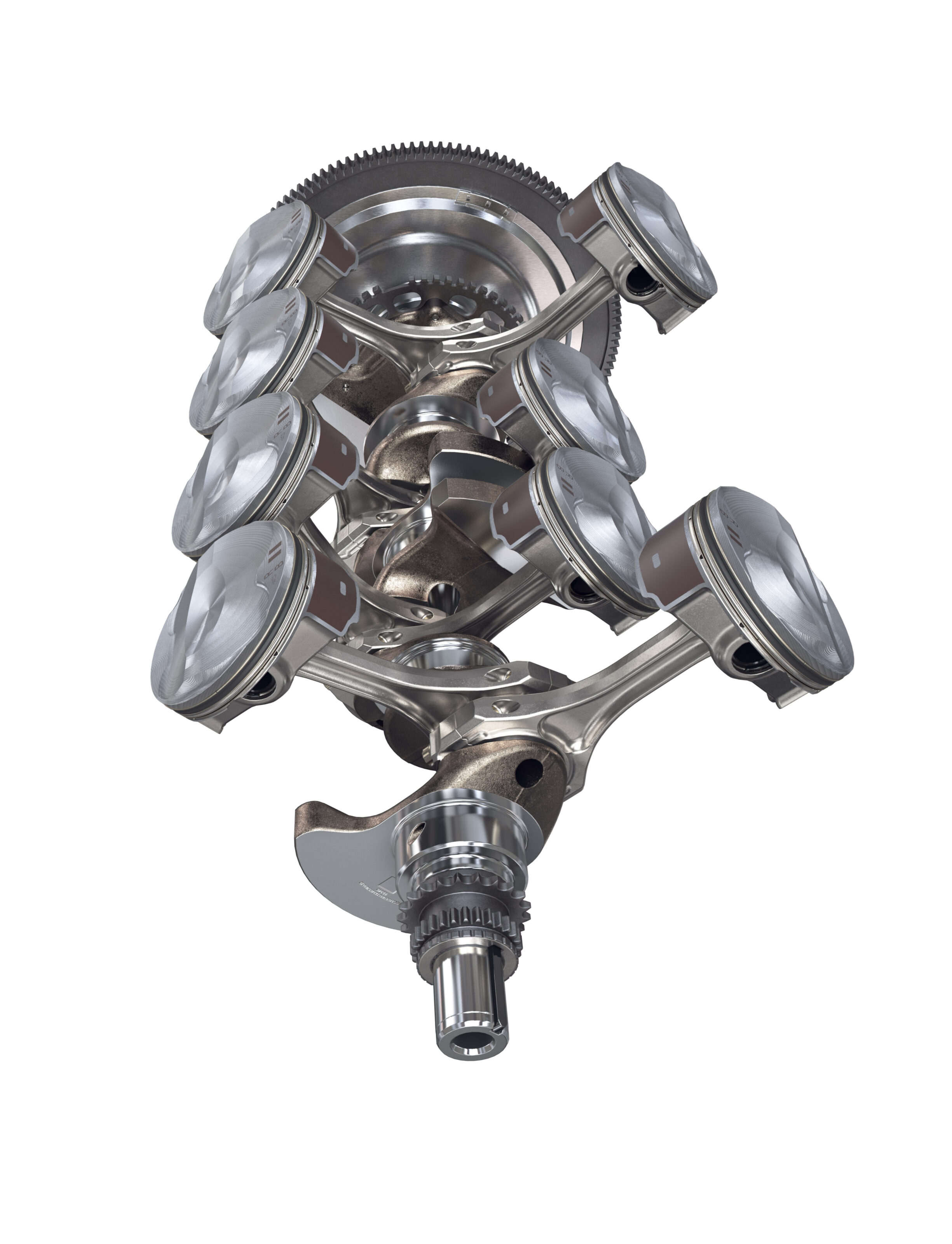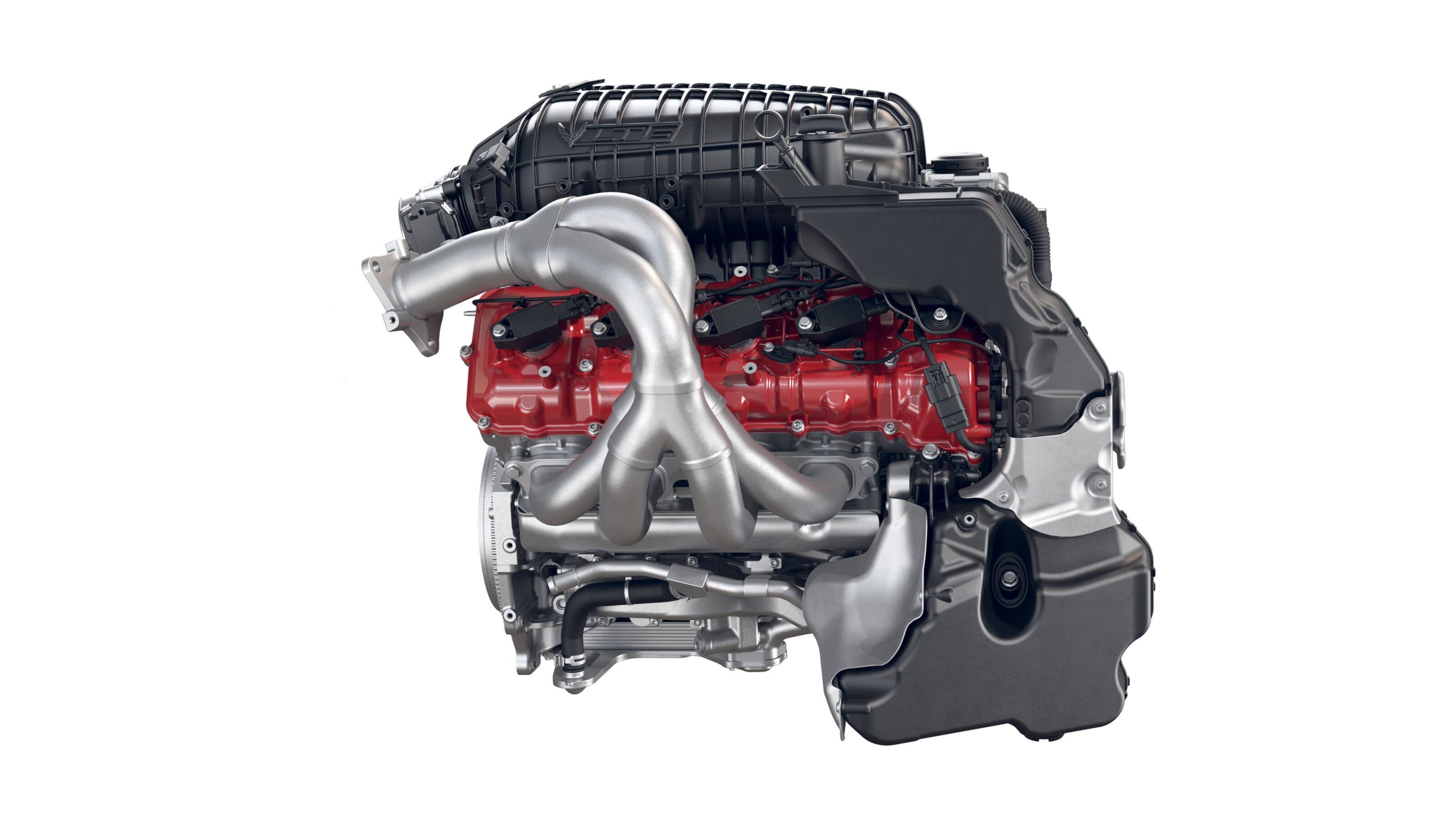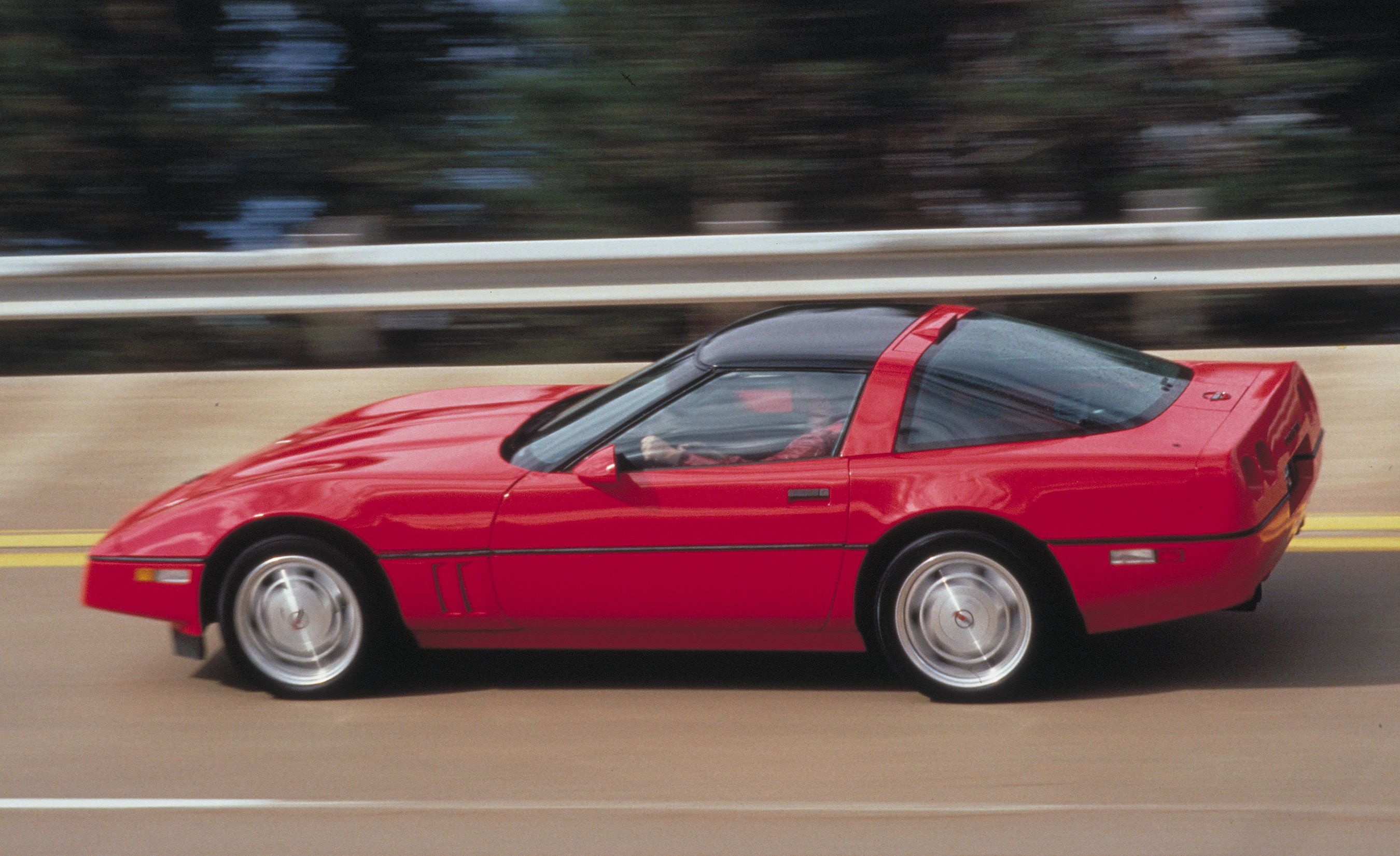General Motors has revealed the ultimate factory iteration of its LS engine, a 493kW naturally aspirated – twin-cam – dry-sump monster revving to a lofty 8600rpm and producing 493kW in the process.
Codenamed ‘Gemini’ as a nod to the Apollo astronauts who favoured Corvettes in the 1960s, GM says the officially named LT6 was its ‘moonshot’ project for the LS engine family. The end result, after six years of development, is the most powerful naturally aspirated production V8 ever, trumping even the mighty 464kW 6.2-litre M159 in the all-conquering Mercedes-Benz SLS AMG Black Series from 2014.
Due to make its debut in the back of the new, track-focused C8 Corvette Z06, Chevrolet engineers were given the green-light to go back to natural aspiration after the C7, whose supercharging somewhat broke with Z06 tradition. Long-time Z06 owners, say engineers, pined for the days of the C6 Z06 which used a free-revving, free-breathing 7.0-litre LS7 V8.
Starting with a clean-sheet design, the LT6 shares only its bore spacing with the 6.2-litre LT2. With forced induction off the table, Chevrolet – basically benchmarking the 12-year-old V8 from the Ferrari 458 – opted for an exotic flat-plane crankshaft design, which in turn effectively dictated the remainder of the engine.

As we’ve covered off before, flat-plane crankshafts, while much more difficult to balance than traditional cross-plane equivalents, reduce reciprocating mass by about 30-40 percent. That means more revs are possible – and more power – with better response.
Higher revs mean higher piston speeds, and so the LT6 uses an oversquare design. A bore size of 104.25mm is not far off that of the 7.0-litre LS7, but there’s a relatively short 80mm stroke. Chevy engineers say the resulting 5.5-litre capacity is the ‘big block’ of flat-plane-crank engines – as big as you can basically go – surpassing even Ford’s 5.2-litre ‘Voodoo’ flat-plane V8 as seen in the GT350 and GT350R.
As with the 458 Speciale, there’s a high 12.5:1 compression ratio, even if it’s not quite as dizzying as the 13.1:1 in Porsche’s new atmo 4.0-litre 911 GT3; or the positively altitude-sickness-inducing 13.5:1 in Ferrari’s screaming 6.5-litre V12 812 Competizione.
Reciprocal mass is kept to a minimum with forged aluminium pistons – which are a ‘work of art’, says GM – and forged titanium conrods.

In what could be a sacrilegious first for an LS engine, finally there are twin-cam heads – with engine speeds as high as 8600rpm, the pushrods had to go. Chevrolet has effectively installed the valvetrain from its C8.R racing engine. Dual cams press down on ‘finger’ followers rather than traditional tappets, making for a system that’s lighter, more durable but also reduces the risk of valve float.
There are dual-coil valve springs to reduce vibration; and lightweight titanium inlet valves and sodium-filled exhaust valves. Tantalisingly, GM says the valvetrain can support more than 8600rpm, too.
An engine moving so much air needs big lungs. Again somewhat aping the 458 design, an enormous 11-litre split intake manifold is fed by two 87mm throttle bodies as big as the average male fist. Three small butterfly throttles connect the two large inlet chambers in the middle, opening variably as required so both chambers can breathe as one.
Trumpet-shaped inlet tracts are optimised for each cylinder, to achieve volumetric efficiency exceeding 110 percent at 6300pm and 106 percent at redline, meaning slightly more air than atmosphere is getting rammed into the cylinders – free power, effectively, simply by dint of clever intake design.

At the bottom of the engine a motorsport-derived, dry-sump set-up circulates 9.5 litres of oil. A six-stage scavenge pump sucks so much that the crank operates in a near vacuum, reducing windage and improving efficiency, even if by a minuscule amount. But it all counts.
And it all adds up to 493kW at 8400rpm and 623Nm at a fairly high 6300rpm. GM will fit the Z06 with a shorter 5.56:1 final drive as most owners will be used to bigger-bore low-speed drivability.
As for the noise, early prototypes spotted at the Nurburgring share, predictably, the flat-plane-crank wail of a Ferrari. GM says it spent a year optimising the C8 Z06’s exhaust. Needless to say, while it will sound different to the thumping cross-plane LS engines we’re all familiar with, it should still be aurally unreal.
With European manufacturers effectively halting V8 development or outright replacing them, it’s a joy to see the LS still going strong in the Land of the Free. And to think the ‘best’ iteration might still be yet to come.

Project Gemini: Four signs of shooting for the stars
01
GMSV has confirmed the C8 Z06 will arrive in Australia late in 2022, so you might even get to hear one for yourself. From the footpath… unless you have about $300K.
02
A computer selects the perfect shim size for each engine’s rigid valvetrain. As such, the valvetrain is a non-serviceable item set for life, never requiring adjustment.

03
While a standard run-in period is likely to be recommended, each engine is run for 20 minutes on a dyno to ‘break it in’, including a wide-open-throttle blat at maximum revs.
04
As part of its Gemini code-naming, GM says it scattered numerous ‘easter eggs’ around and even in the LT6 engine. The most obvious is a tiny rocket embossed on the engine’s front cover.

The first DOHC Chevy small block
GM’s first twin-cam, small-block V8 was actually a one-off design called ‘LT5’. In the late 1980s, GM had just bought Lotus Engineering, and leveraged its expertise with twin-cam engines to build a DOHC 5.7-litre V8 for the 1990 C4 Corvette ZR-1. With 280kW, it was plenty quick, keeping up with supercars from Italy and Germany at the time.
The LT5 was built by contractor Mercury Marine in Oklahoma, which had experience manufacturing high-performance, all-aluminium engines for boats. High cost ended the twin-cam dream in 1995, but lessons were applied to the engine that replaced it, GM’s new-for-1997 Gen III LS1 V8.
We recommend
-
 News
News2025 New Car Calendar: All the new cars coming to Australia
Take a look at our list of what is expected to launch in Australia in 2025 – plus those we might not see locally just yet
-
 Features
FeaturesChevrolet’s Corvette LT6 engine is a masterclass in natural aspiration
It’s rare we get to look at a naturally aspirated V8 in tech, but the Corvette’s LT6 mill is more than worthy





